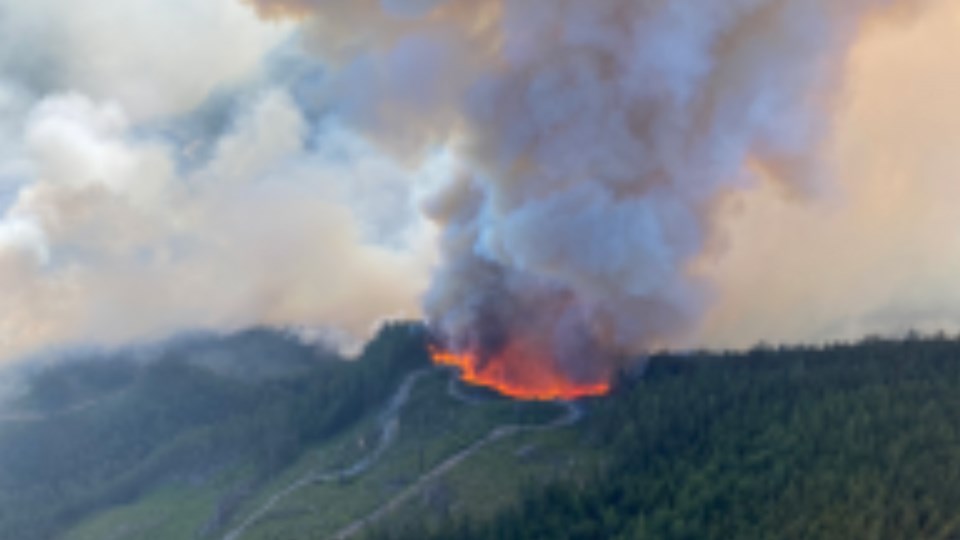A wildfire burning outside in the Agassiz-Harrison area is growing in size and showing ‘aggressive’ fire behaviour.
The Chehalis River wildfire was first discovered on Saturday, June 3 and has grown to 500 hectares.
The BC Wildfire Service (BCWS) said Wednesday the fire is a "wildfire of note" and is burning out of control, meaning it's continuing to spread and isn't responding to suppression efforts.
"Resources are staffing up to action indirect tactics,” stated BCWS staff.
Indirect attack is used when wildfires are moderate- to high-intensity and it's unsafe for crews to work close by.
The wildfire is suspected to have been human-caused.
Since Tuesday, the wildfire has grown more than 200 hectares. It is burning west of Harrison Lake and just north of Chehalis Lake.
"Crews work to establish control lines further from the fire, aiming to box in the fire,” said a service spokesperson, adding visibility from smoke and inversion layers are limiting aviation operations.
BC Wildfire Service says fire growth is currently in the direction away from the community.
“No evacuation orders or alerts are recommended at this time,” states BCWS.
Another smaller wildfire is burning nearby at Statlu Creek and is 73 hectares in size.
Smoke from the Chehalis River and Statlu Creek wildfires is causing poor air quality in Metro Vancouver. Also mixing in with the smoke is a wildfire burning on Vancouver Island.
Metro Vancouver has issued an air quality advisory due to wildfires burning to the east of Vancouver.
"Two out-of-control wildfires burning near Harrison Lake are producing considerable smoke that is contributing to degraded air quality and hazy conditions," states the advisory.
"Hot and sunny weather in combination with local emissions and wildfire smoke has resulted in elevated levels of ground-level ozone."
The advisory is focused on the eastern parts of the Metro area, along with the central and eastern parts of the Fraser Valley. Smoke concentrations may vary widely across the region as winds, temperatures and wildfire behaviour changes.



